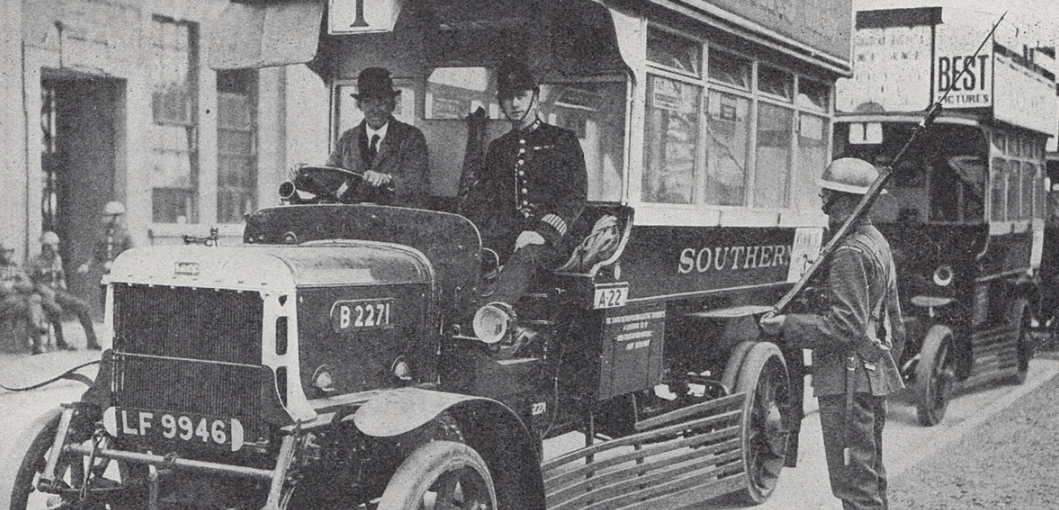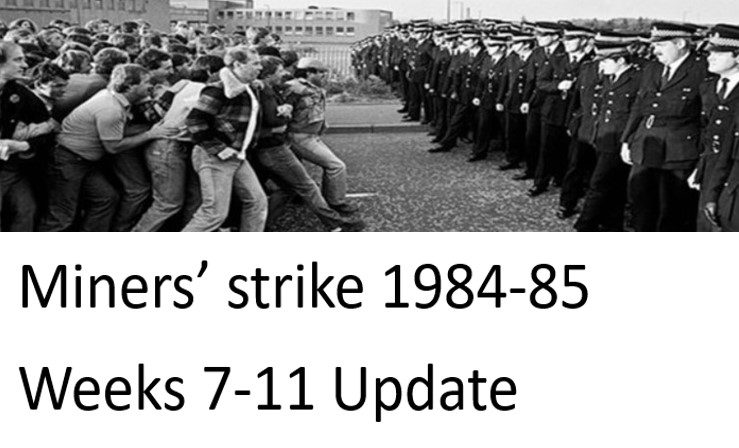By Mark Langabeer, Hastings and Rye Labour member.
The TUC is organising the first coordinated action of all of those trade unions that have balloted for strike action, in a little under three weeks. This is, in effect, the nearest equivalent in modern terms to a general strike, and it is important that Labour and trade union members study and discuss the general strike of 1926 and the lessons it gives.
The background to that strike was the election of a Tory government in 1924, which, like today’s, had the aim of reducing the pay and conditions of workers generally. As far as they were concerned, British Industry needed to ‘cut costs’ to remain competitive in world markets, and this meant a reduction in pay and conditions.
The Tories also decided to reintroduce the ‘gold standard ‘, meaning that the value of Sterling would be pegged to gold, so when the gold price increased, the value of the pound rose, placing an additional burden on exporters of coal, steel and manufactured goods.
At that time, the coal industry was central to Britain’s economy, with a million and a quarter coal miners in the industry, and the coal bosses demanded pay cuts for miners and longer working hours. The miners’ union refused to accept such cuts and the stage was set for a confrontation that threatened to paralyse the country. The Tories at first decided to retreat and gave a subsidy to the coal owners for a duration of nine months. Effectively, this gave them time to prepare for a battle at a later stage.
Tories used apparent ‘climbdown’ to prepare for more serious action
The Tories set up a Royal Commission on the situation in the coal industry, and while many trade union leaders celebrated what seemed to be a Tory ‘climbdown’, the government used the time to make serious preparations.
They set-up civil commissioners who were given emergency powers. They introduced a body called the Organisation for the Maintenance of Supplies, essentially a strike-breaking organisation. The left- wing leader of the Miners Union correctly described the situation as more like a ‘stay of execution’ and he was proved to be right when the Royal Commission, as expected, recommended pay cuts.
The TUC leadership wanted its negotiating committee to conduct talks with the government on the basis of the Commission Report, but the Miners Union rejected this ‘offer’ and so the TUC General Council announced strike action in transport and on the docks. This was the beginning of the General Strike, but instead of calling workers out en masse, they adopted a rolling programme, with engineering workers and others only joining the action at a later stage.
The general strike action lasted only nine days but even in that short time, with local ‘councils of action’ organising matters, including the only ‘permitted’ transport, the enormous potential power of the working class was revealed. As AJ Cook, the miners’ leader, said of the time, “It proved conclusively that the labour movement has the men and women that are capable in an emergency of providing the means of carrying on the country. Who can forget the effect of vehicles with posters stating, ‘By permission of the TUC’. The government with its OMS was absolutely demoralised.”
General strike was gaining momentum when it was called off
It was trades councils and local Labour Party branches that became centres for the coordination of strike committees. The level of support for the strike took the Government and even the TUC leaders by surprise. Yet this marvellous movement – one that was still gaining momentum after nine days – was abruptly ended by the TUC General Council, without any agreement on miners’ pay having been arrived at.
The union leaders betrayal was an inevitable product of their political outlook. The general strike, with workers running their local communities, producing news bulletins and effectively bringing capitalism to a dead stop, had raised the key political issue of power. Who runs society, and in whose interests? A general strike is a turning point, when the potential for a change to a different form of society presents itself. Will the workers become the government – as they had in Russia in October 1917? Or will their leaders walk away?
The Prime Minister, Stanley Baldwin understood this and he bluntly put the question to the leaders of the TUC, asking them if they were prepared to ‘take power’. They were not, of course, having no faith in any other form of society other than capitalism. They had no confidence in the working class or its organisational capacities.

Accustomed to securing only crumbs from the Bosses table, the TUC leadership saw no alternative but to surrender and call off the general strike, leaving the miners in the lurch. The right-wing Union leader, J Thomas, even said that he feared the ruling class less than his ‘own’ class.
The calling off of the strike came as a complete surprise to workers in the localities who could see the enormous strength the movement had, and the impotence of the government in the face of it. Some workers were even on the point of joining the strike.
Dramatic decline in strikes and union membership
The inevitable confusion that resulted led to anger among miners and among workers in general a significant demoralisation. Trade union membership fell from around five million to four million and there was a dramatic decline in the number of days lost due to industrial actions.
It took the working class and the broader trade union movement many years to recover from this debacle, not, in fact, until immediately prior to the Second World War. While the TUC leaders in 1926 were prepared to swallow the Royal Commission report, the miners refused and they struggled on alone. They were locked out for eight months, until they were forced to accept pay cuts.
We might add that the defeat of the miners’ strike in 1984/5 had similar consequences. Trade union membership fell from over 13 million in 1979 to around six million, although there is a gradual upswing in numbers now. Similarly, in the 1980s the number of days lost due to industrial action fell to historically low levels, again something that is being corrected today.
Today, as a result of the steep rises in the cost of living, many workers have taken action to defend their pay and conditions during the. Hardly a day passes without news of further dates for strike actions or ballots. The TUC have announced a day of protest over plans to restrict the right to strike.
The current strike wave has a common cause and it requires a common response. A one-day strike of all workers currently in dispute will increase the pressure on the Tories and their big business friends. Rather than address the issues causing the strikes, the Government is aiming to enforce minimum service levels, which is nothing more than an attempt to weaken the trade unions’ ability to defend members.
TUC must look to its industrial muscle, not a handful of barristers
It is reported that the TUC is considering legal action. There is nothing wrong with using legal avenues, where they are available, to protect workers from injustices. However, it would be a serious mistake for the leaders of the trade union movement to put their eggs in this one basket. In the large majority of cases, High Court and Supreme Court judges have not exactly shown themselves to be the friends of the working class.
Instead, the TUC leaders should convene a special Congress to discuss a campaign of opposition to this latest round of union-bashing. The central focus of that campaign should be mass demonstrations and rallies in all parts of the UK but it should also aim to use the industrial muscle of the millions of TUC members, not a handful of barristers, to defend the right to strike.
Any worker who is sacked for refusing to comply with an order to work during a dispute should be given full support from the movement including by strike action. An injury to one, is an injury to all. That old labour movement motto is as relevant today as it was when the trade unions were first founded.
The rights of union members will only be adequately defended by a trade union leadership prepared to take militant and energetic action to defend the right to strike. But ultimately, living standards, the right to strike and all other democratic freedoms will depend on a political movement that strives to change society, from one based on greed and profit to one based on the needs of the working class.



